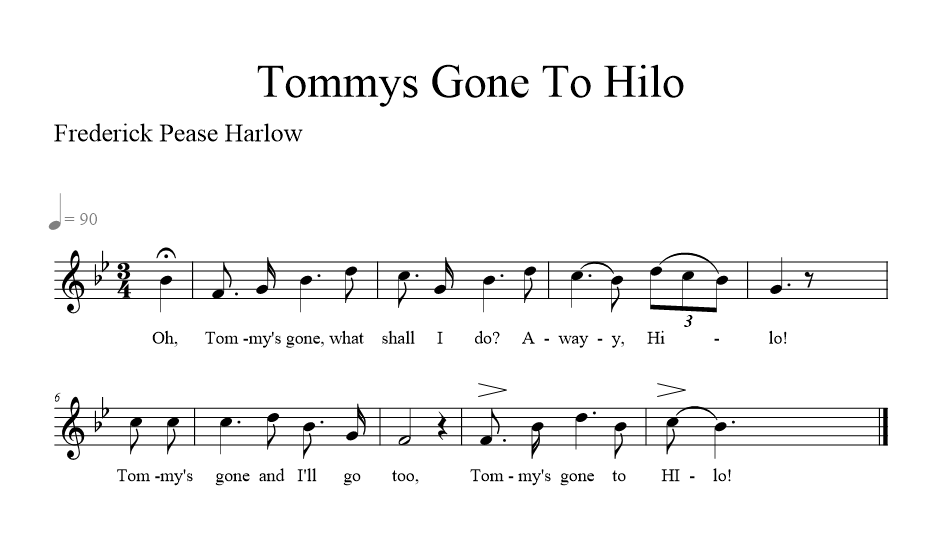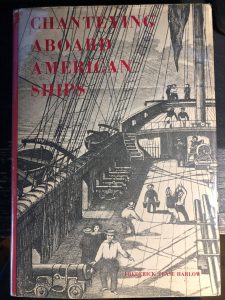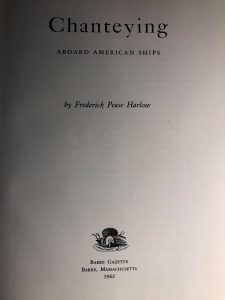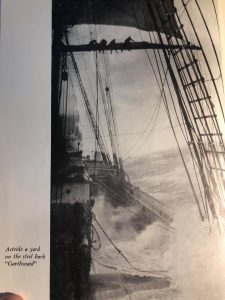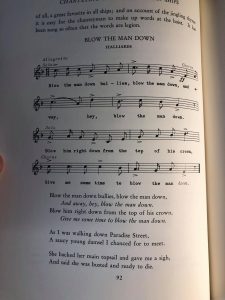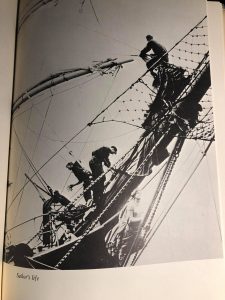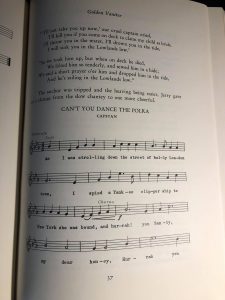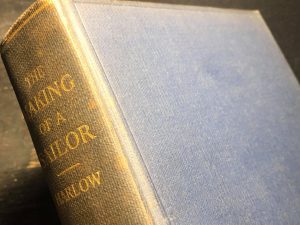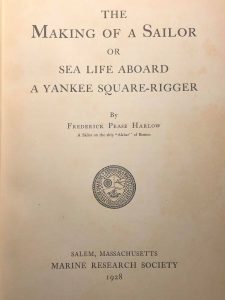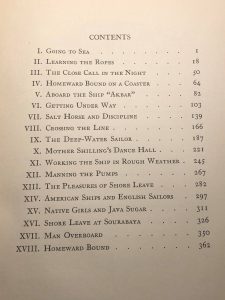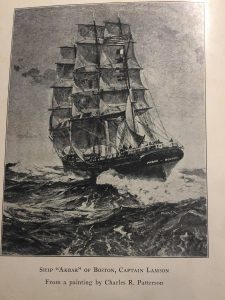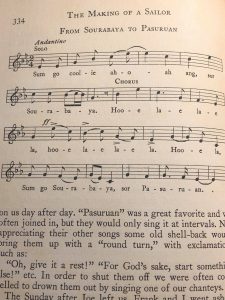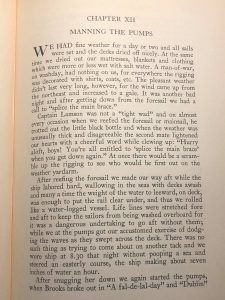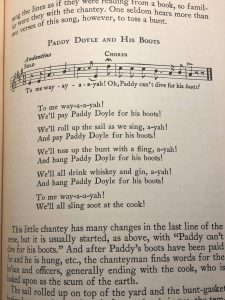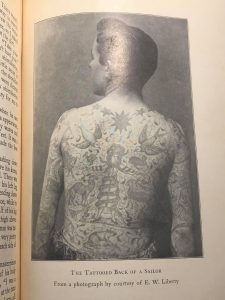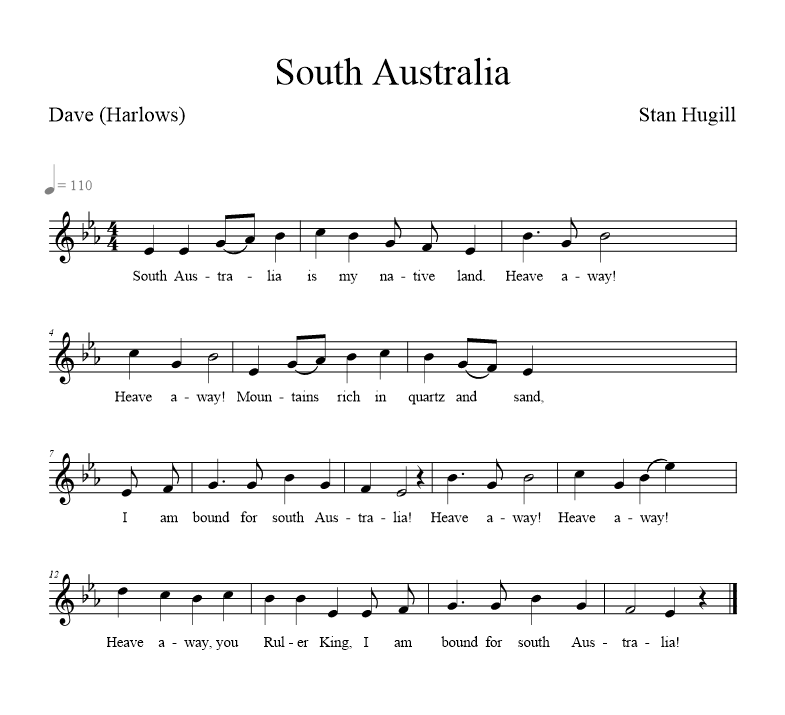Interesting Facts about the O Mary Come Down!
“O Mary Come Down!” is a very intriguing case. Stan Hugill took this shanty from “The Making of a Sailor” by Frederick Pease Harlow (1928). The title is not given by Harlow so must be just made up by Stan Hugill, also noted the type of this shanty we can derive from the description of the sailors work described by Harlow, wrote:
“Taking a turn under the belaying-pin, O’Rourke and “Handsome Charlie” began swaying off. The halliards led down to the starboard side of the five-rail around the main-mast. Bracing their feet below and grasping the halliards above their heads these two men swayed away from the bitts, throwing their bodies backward for all the weight they had. This brought the halliards down until their bodies stood at right angles from the fife-rail, then bending their knees and holding all they had gained, they rendered the rope under the pin while I pulled in the slack ready for another pull.
The sing-out for this kind of work varies in call from “Yo-ho, he-oh!” or “A-hoy, boys!” with the pull coming on the last word, to a semi-chantey. “Handsome Charlie” broke out in the latter, – one of negro origin”
… and here given to us music notation of this like he described “semi- chantey”, after he added:
“Here, the pull for the sway-off comes on the accented notes, In the same measure a hold or pause is necessary while the rope is being rendered under the belaying-pin, giving time for men to regain their feet and secure a fresh hold on the halliards above.”
The song will be reconstructed by myself as the sweating-up shanty.
The source of this sea shanty
The music: “The Making of a Sailor” by Frederick Pease Harlow (1928).
The lyrics: “The Making of a Sailor” by Frederick Pease Harlow (1928).
Mentioned in: “Shanties from the Seven Seas” by Stan Hugill (1st ed: p 368).
The Record of the O Mary Come Down!
You also can find this record on my YouTube channel here or directly listen below. Additionally, if you want to share your opinion about the record or share your opinion you can do it in my Facebook forum here, or leave a comment at the bottom of this blog article.
The musical notation
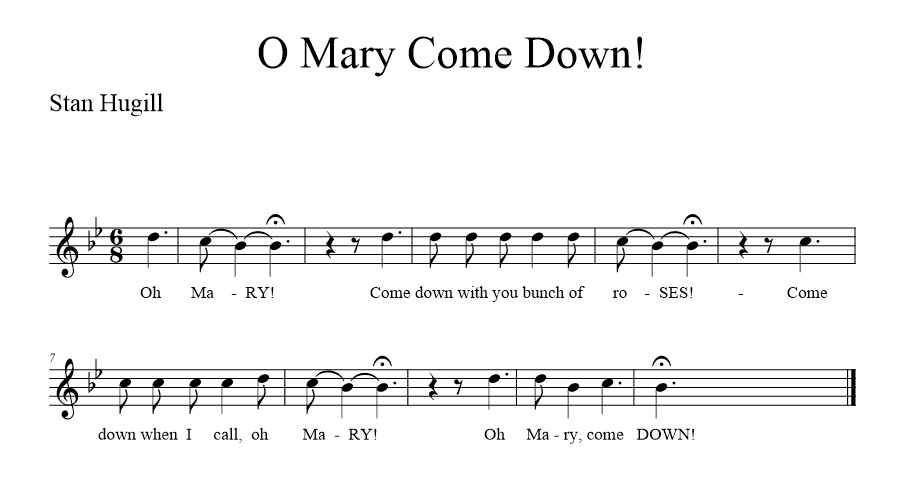
The full lyrics
O Mary Come Down!
Oh Ma – RY!
Come down with you bunch of ro – SES!
Come down when I call, oh Ma – RY!
Oh Mary, come DOWN!



